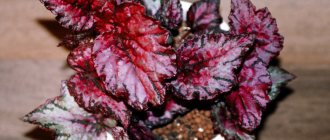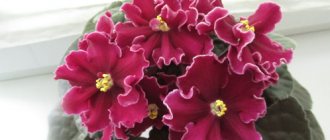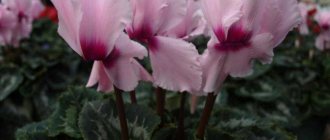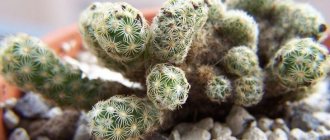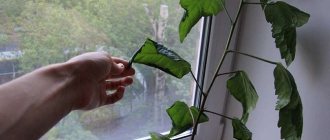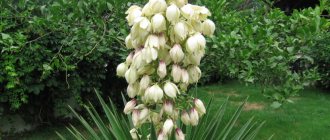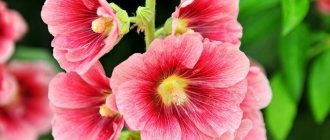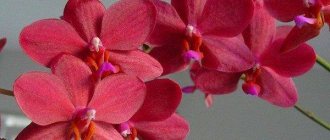Basic mistakes in plant care
Hibiscus, also known as Chinese rose, is not a very capricious plant, and it is quite unpretentious in care. It forgives small mistakes, but systematic violations of temperature and water conditions and other parameters it needs, naturally, will not go in vain. The plant will begin to hurt, wither, and if nothing changes, it may even die.
The most common mistakes in caring for hibiscus include:
- Violation of the watering regime, which can lead to rotting of the roots of the flower.
- Watering the plant with contaminated or hard water that has not had time to settle properly.
- Lack of spraying necessary for the flower, especially in the hot season.
- Hot and dry indoor climate.
- Leaves exposed to direct sunlight.
- Bad light.
- Drafts in the room.
- Untimely transplant
- Incorrect feeding – lack of nutrients or “overfeeding”.
- Dust and dirt on the plant.
Long-term violation of the requirements for caring for Chinese roses will certainly cause the development of diseases of home hibiscus.
Is it possible to keep a Chinese rose at home: signs and superstitions
Homemade Hibiscus is undoubtedly a worthy home decoration, however, many superstitions are associated with this plant. For some gardeners, the energy that green pets bring is very important, so you need to study what effect this plant has on humans. In this case, you need to figure out what benefits and harms Hibiscus brings to the house.
It is recommended to place the Chinese rose in offices, educational institutions, and work rooms. Hibiscus helps stimulate creativity and improves mood. For people prone to laziness, depression and apathy, as well as low blood pressure, Chinese rose helps to tune into a positive mood, which contributes to greater productivity at work.
According to different beliefs, Hibiscus has a rather contradictory effect on the love sphere. It is believed that the flower is able to bring love and harmony into the life of a couple and refresh cold feelings. However, it is also generally accepted that the Chinese rose contributes to the rapid discord and separation of lovers, and a lonely girl who decorates her house with this plant is doomed to loneliness and will not be able to find a life partner.
There are several signs associated with the Chinese rose:
- If a plant blooms at an unusual time, this may mean the imminent death or serious illness of one of the family members.
- The beginning of Hibiscus flowering for an unmarried girl means imminent marriage, and for a married couple it means quarrels and separation.
- Withering, falling leaves, death of the plant - foreshadows illness and discord in the house.
To prevent Hibiscus from taking away the owner’s energy, it is recommended to place it in the corridor, hallway, living room, balcony or loggia. A flower pot cannot be placed in the bedroom or nursery. Also, the owners of this plant are wondering whether Hibiscus is poisonous or not. There is an opinion that the juice of this plant can be dangerous for children and pets. Of course, if pets and small children chew leaves and flowers, there is a high probability of poisoning and an allergic reaction, so you should not place a pot of Chinese rose in an accessible place. Despite this, it is quite difficult to call Hibiscus poisonous, since most undesirable reactions are associated with individual intolerance to the plant and careless handling of it.
Diseases caused by improper care: sunburn
Yellow spots on the leaves may be the result of sunburn. When choosing a place for a plant, you need to remember this. Usually, the Chinese rose tolerates sunlight well, but if you place a flower accustomed to shade in the bright sun, hibiscus leaf disease cannot be avoided. Dry yellow spots appear on them. They can also occur in places that are pressed against the glass. To avoid this, experts recommend accustoming hibiscus to sunlight gradually. Affected leaves with dry areas will have to be removed.
It is also necessary to know that changes in the color of leaves and the appearance of spots on them may be associated with a lack of certain substances in the soil. For example, if there is a lack of an element such as zinc, the leaves may become speckled and shredded. If the edges turn brown, the plant does not have enough sulfur. Marbling of the leaves, in which there are white spots between the veins, indicates a lack of magnesium. If the hibiscus lacks potassium, the leaves may begin to die at the edges. In addition, the plant will not bloom well.
Popular types of indoor Chinese roses with photos and descriptions
Despite the huge variety of Hibiscus species and varieties, not all of them are suitable for growing at home. Only a few varieties have gained particular popularity.
Cooper's or Variegated
A characteristic feature of this species is its variegated leaves, decorated with spots of white, yellowish and pinkish. In bright light, the foliage of this low shrub turns completely pink. In addition to the showy leaves, this variety of Chinese rose boasts bright and large flowers. The flowers of the plant are red; from the edge to the center the color of the petals becomes more intense, and the center of the corolla is decorated with an unusually curved pistil.
Changeable or Crazy Rose
A beautiful evergreen plant with double flowers and large leaves. At the beginning of flowering, the buds are creamy, but over time they turn white and then gradually turn pink. Each flower retains its decorative effect for up to 3 days, and at the end of flowering the petals turn purple.
Tequila Sunrise
One of the most unusual varieties with extraordinary flowers. The petals of the flower are peachy-orange with a red center. The pistil of the flower is decorated with a fluffy skirt of small petals of the same color.
Night runner
It is distinguished by incredibly beautiful large flowers, the diameter of which reaches 18-22 cm. The center of the flower is white and pink with a wide border of alternating red, blue and coral stripes. The edges of the petals are wavy with a yellowish edge.
Schizopetalus
People called it the “princess earring” for the incredible shape of its strongly dissected, bent orange-red petals. This gives the flowers a charming fluffiness, while their diameter reaches 5-8 cm. The variety is not large in size, but forms a spreading bush about 1 m high and up to 60 cm wide.
Tivoli
It grows as a low shrub with a powerful trunk and large flowers with pronounced relief veins. The diameter of the flower is about 15 cm. The flowers are red, single, with a yellowish border.
Leaf chlorosis
Leaf spotting, or chlorosis, can also be caused by a lack of nitrogen and magnesium, and their yellowing and falling off can also be caused by a lack of iron in the soil. This is the so-called non-infectious chlorosis. The problem is solved by applying fertilizers, which should be regular, from spring until about mid-August, once every two to three weeks, and then, until the dormant period, once a month.
The lack of iron can be compensated for by adding iron chelate (5 g per 5 liters of water) to the water for irrigation. It is recommended to spray the leaves with the same solution. In total, it is advisable to carry out at least four treatments (once every two weeks).
This hibiscus disease (photo can be seen below) can also be caused by pathogens - viruses, fungi, bacteria, which are often carried by pests.
In this case, the plant usually has a depressed appearance. It is quite difficult to cure chlorosis in this case, since it is difficult to determine the causative agent of the disease. Therefore, it is easier to prevent it: provide good care, regularly wipe the leaves from dust and dirt, spray the hibiscus, replant it in a timely manner, changing the soil to a new one.
Spider mite infestation
This is one of the main pests of hibiscus. When it infects the leaves, it envelops them from below with a web. The leaves curl and wither. This pest thrives in dry, warm conditions, so in order to prevent infection, it is necessary to keep the hibiscus leaves clean and spray them regularly.
Chemicals such as Actellik, Fitoverm, Neoron will help fight the pest. However, the peculiarity of this pest is that it quickly gets used to such drugs. Oddly enough, folk remedies may be more effective. Most often, soapy water, infusion of garlic, and onion peels are used. To prepare the infusion, two heads of garlic are crushed and filled with water (1 liter). Leave in a dark place for five days. Before use, the product is diluted in half with water and used to spray the plant.
For onion infusion, 100 grams of onion peel must be poured with five liters of water and infused for four to five days. Strain the infusion and use to spray hibiscus.
It is advisable to periodically wipe the window sill on which the plant stands with a soap solution as a preventative measure.
Whitefly infestation
This small flying insect should also be mentioned when describing ficus diseases and their treatment (a photo of the pest is presented below). It lives on the underside of hibiscus leaves. The leaves become covered with sticky spots and turn yellow.
To get rid of whiteflies, chemicals are usually used - Fufanon, Aktaru, Iskra. Adult insects can be washed off with a stream of water, and larvae, eggs and plaque can be removed with a swab of soapy water (100 g of crushed laundry soap, or better yet, tar soap per half liter of water).
Why doesn't hibiscus bloom?
The lack of flowering in hibiscus can be called a disease at a stretch, but it can ruin a gardener’s mood for a long time. What could cause it?
The first reason is a lack of nutrients (in particular, potassium deficiency). The plant simply does not have enough resources to flower. The second is lack of lighting. Bright light is necessary for setting buds. In order for hibiscus to bloom, the time spent in light must be at least four hours a day. The lack of flowers may be due to the fact that pruning was not carried out in a timely manner. It must be remembered that flowers form on young shoots. To plant them, it will also be useful to replace the soil in the pot and carefully move the hibiscus to a more illuminated place.
In addition, the flower needs a rest period from October to February. It is believed that in order for the Chinese rose to bloom, it is necessary to reduce the room temperature to 15-18 degrees Celsius. Flower buds are formed precisely under these conditions. Although cases of winter flowering of hibiscus are not uncommon. If the sun's rays penetrate well into the room, this is quite possible.
In addition, the hibiscus may begin to prepare for flowering and suddenly drop its buds. Why is this happening? Experts note that during the flowering period, the Chinese rose should under no circumstances be moved from place to place. Hibiscus generally does not tolerate rearrangements very well, and even more so during flowering or preparation for it, when all the flower’s forces are spent on forming buds.
Describing hibiscus diseases and their treatment (photos of some of them are presented in the article), it should be noted that the fall of the flower ovary can also be a consequence of damage to the hibiscus by a pest - gall midge, a miniature midge. She attacks the buds, laying her eggs in them. Naturally, the hibiscus will no longer bloom, the plant will shed its buds. If it is clear that they have turned yellow, they must be carefully torn off and destroyed to prevent the spread of pests. The soil should be treated with Provotox, Grizzly or Fly Eater, strictly following the instructions.
So, to summarize, we can say that for a plant to bloom, it requires a period of rest in winter, pruning, optimal lighting and timely feeding. In addition, you should not often move the flower from place to place.
Transplanting a Chinese rose
Young Hibiscus need to be replanted annually, but older ones can be replanted only as needed. If roots begin to protrude from the drainage holes, this will be a clear signal to replant.
When to replant indoor Hibiscus
Transplantation is carried out in the spring, when the plant is just beginning to wake up from hibernation and show signs of growth.
Priming
Hibiscus is quite undemanding when it comes to soil composition, but it grows best on fertile, slightly acidic substrates (5.0-6.0 pH). You can use special mixtures for flowering indoor plants, but add a little sand, perlite or pieces of coal to them. Experienced flower growers advise preparing the soil yourself from humus, turf and leaf soil with the addition of sand in a ratio of 1/3/3/1. A little coal is mixed into the finished soil.
Pot
New dishes should be 3-4 cm larger than the previous one and have a sufficient number of drainage holes. If you plant a Hibiscus in a pot that is too spacious, it will concentrate all its energy on growing roots and will not bloom for a long time. You can use dishes made of any material, the main thing is that it is stable and does not tip over under the weight of the green mass.
During the procedure, it is not recommended to shake the earthen ball, so the flower is well watered beforehand, then carefully removed along with the substrate. 2-3 cm of expanded clay, pebbles or pieces of brick are poured onto the bottom of the new dish, then a small hill is formed from the prepared substrate, a plant is placed on it and all empty space is filled with earth. The root collar is not buried during planting.
